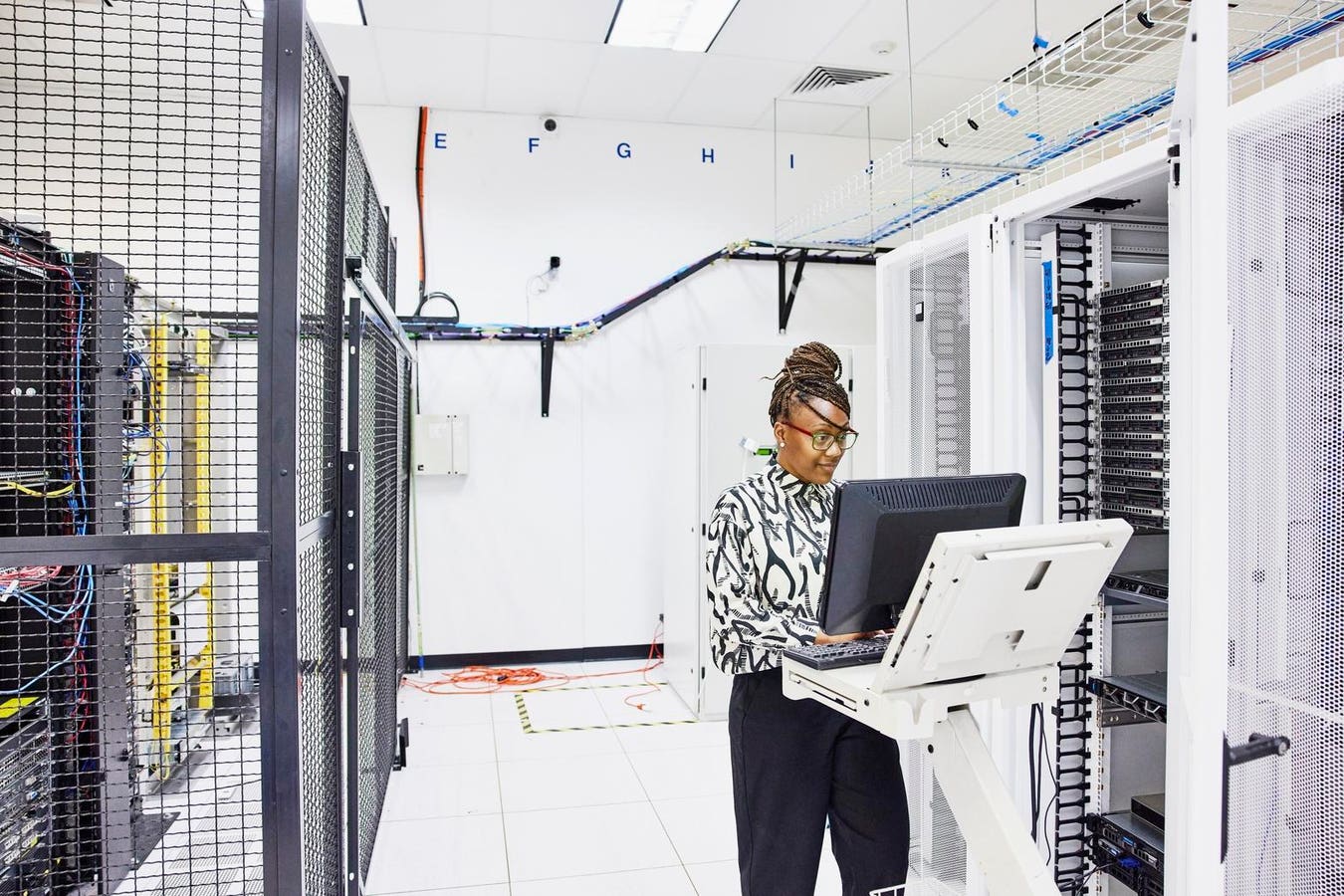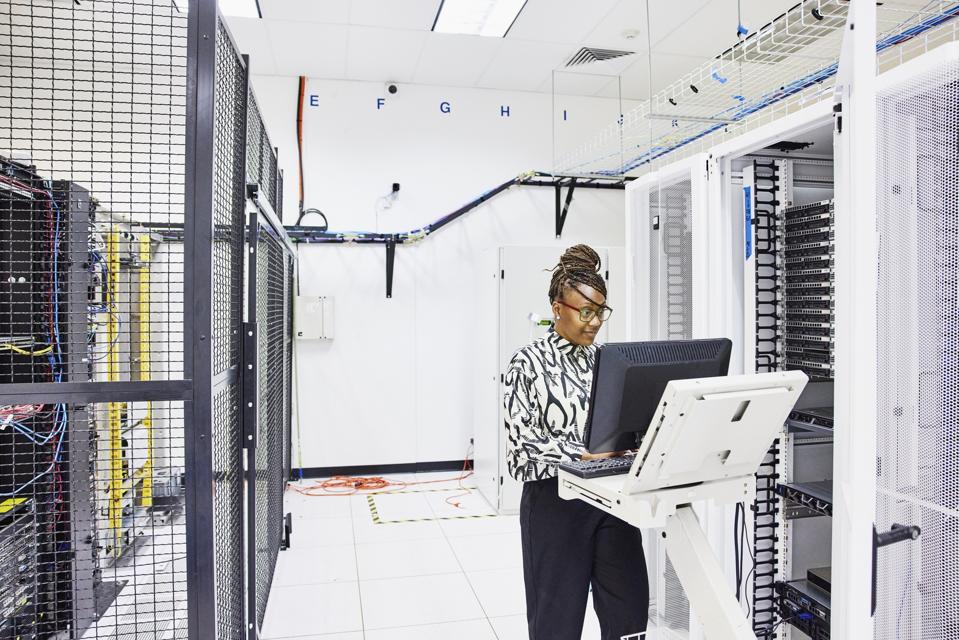Kathleen Abbott leads Arcadis global business development, running strategy on key clients, sector priorities and city programs.
Businesses have an opportunity to align financial performance with sustainability objectives by adopting a whole-life carbon strategy. This process assesses an asset’s carbon impact across its lifecycle—from construction to operation and decommissioning.
While transitioning to low-carbon practices involves upfront costs and challenges, the long-term benefits—including energy efficiency, regulatory compliance and enhanced reputation—make it a compelling investment.
AI data centers, as energy-intensive facilities, are a key focus for improvement through measures like renewable energy use and sustainable construction. Success requires overcoming barriers, such as initial costs and carbon accounting complexities, while leveraging collaboration, regulatory support and strategic integration. Though financial returns will yield over time, this approach positions businesses to thrive in a future that prioritizes low-carbon investments.
The Holistic Impact Of Whole-Life Carbon Investment
What if the data centers powering our digital world could also lead the charge against climate change? With 95% to 98% of their emissions coming from operational energy use, the opportunity to reduce carbon is as massive as the industry itself, a market poised to grow to $774 billion by 2032.
Compelling client examples across the industry illustrate how major players are investing in the development of lower-carbon data centers:
Google is slashing up to 25% of energy consumption in data centers by harnessing the power of machine learning to optimize cooling systems. With a record-breaking Power Usage Effectiveness (PUE) of 1.1, Google’s use of sustainable innovation proves that cutting-edge AI isn’t just smart but green.
In San Jose, California, Microsoft is leveraging renewable natural gas and a 60-megawatt backup generator at its data center. This move is a leap toward the company’s audacious goal of becoming carbon-negative by 2030.
Terra Ventures is also setting new standards for sustainable data center design in San Jose. Ditching traditional backup generators entirely, this facility (which our company is helping support) will transform exhaust heat from waste fuel cells into chilled water using state-of-the-art absorption chillers. The result? A more than 50% estimated reduction in cooling energy demand and a significant cut in CO2 emissions.
Shell is making waves in the data center world with 864 immersion-cooled servers powered by advanced processors. By eliminating traditional cooling methods, Shell has significantly reduced energy demand while boosting efficiency.
The Broader Benefits Of Sustainable Data Centers
Capacity constraints are an increasing concern as we rush to satisfy our growing demand for data infrastructure. In response, sustainable strategies are not only eco-friendly imperatives but also sound business decisions.
Energy-efficient whole-system designs minimize energy consumption, lower operating costs and can downsize critical backup power systems. Additionally, optimizing infrastructure can increase ultimate data processing capacity within the same energy footprint.
Sustainable construction practices, including sourcing sustainable and proximity-based building materials, off-site modularized construction and building information modeling (BIM), reduce supply chain limitations and accelerate project timelines.
Investing in sustainability also unlocks financial incentives. Companies pursuing low-carbon projects can access low-interest loans, sustainability-linked investment funds and streamlined permitting processes, accelerating project timelines and reducing upfront costs.
Low-carbon, sustainable facilities can also help win the war for talent. Today’s employees are seeking workplaces that demonstrate a commitment to responsible practices and long-term impact.
Challenges In Achieving Low-Carbon Data Centers
Despite the advantages, achieving low-carbon data centers requires overcoming the same key challenges the industry faces.
Energy sourcing remains critical due to the facilities’ massive power demands. However, advancements in renewable energy infrastructure and innovative storage solutions are helping bridge the gap. Investment in microgrids and hybrid energy models makes balancing sustainable sources with reliability increasingly feasible.
The construction supply chain, particularly in sourcing materials, low-carbon or otherwise, persists as a challenge. While procurement complexities exist, manufacturers drive innovation in sustainable materials, reducing embodied carbon while utilizing feedstocks that enhance the supply chain instead of competing with it. Companies can dramatically reduce carbon use by leveraging emerging materials such as low-carbon concrete, mass timber and bio-based materials.
The industry’s current emphasis on speed and standardization in construction can often lead to over-design and inefficiencies. Designs that overlook site-specific conditions may waste valuable resources, miss out on optimization, such as harnessing free cooling, and ultimately lead to higher costs and environmental impacts. Striking the right balance between rapid deployment and thoughtful, location-sensitive design is essential for building more efficient and resilient infrastructure.
Finally, cooperation across multiple stakeholders—designers, suppliers, communities and policymakers—is a concern, but rallying around a more streamlined, energy-efficient, cost-effective, sustainable investment strategy could unlock levels of teamwork to achieve more with less.
Transformation For A Resilient Future
As demand for digital infrastructure grows, adopting a whole-life carbon approach offers a clear, future-ready and profitable pathway to the future. Collaboration across the value chain, investment in durable materials and operational efficiency will reduce data centers’ environmental impact while maintaining business viability. The demand for low-carbon infrastructure isn’t just a trend—it’s a transformation. By embracing whole-life carbon strategies, businesses can lead the way into a thriving, profitable future. The question is: Are you ready to invest tomorrow?
Forbes Business Development Council is an invitation-only community for sales and biz dev executives. Do I qualify?


